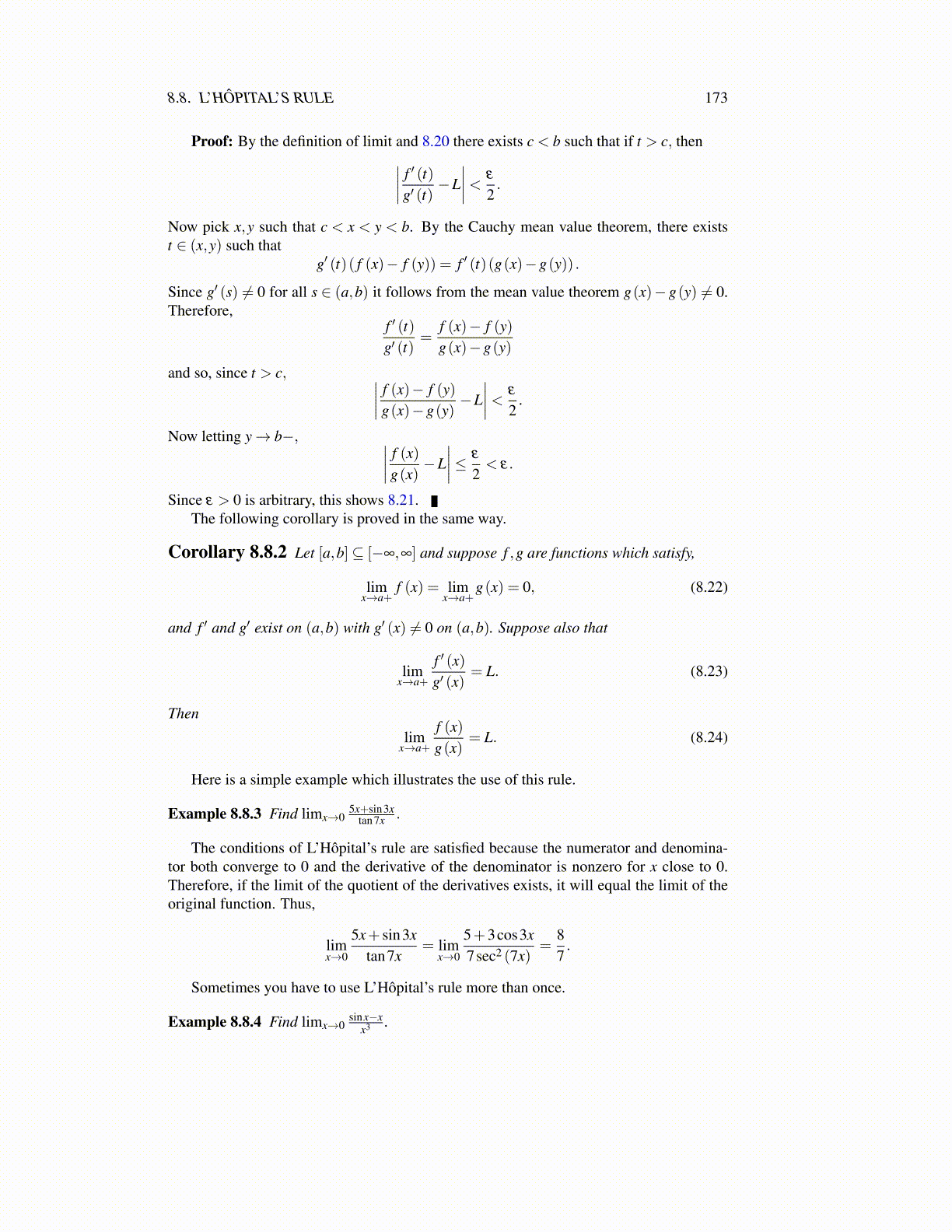
8.8. L’HÔPITAL’S RULE 173
Proof: By the definition of limit and 8.26 there exists c < b such that if t > c, then∣∣∣∣ f ′ (t)g′ (t)
−L∣∣∣∣< ε
2.
Now pick x,y such that c < x < y < b. By the Cauchy mean value theorem, there existst ∈ (x,y) such that
g′ (t)( f (x)− f (y)) = f ′ (t)(g(x)−g(y)) .
Since g′ (s) ̸= 0 on (a,b) , it follows from mean value theorem g(x)−g(y) ̸= 0. Therefore,
f ′ (t)g′ (t)
=f (x)− f (y)g(x)−g(y)
and so, since t > c, ∣∣∣∣ f (x)− f (y)g(x)−g(y)
−L∣∣∣∣< ε
2.
Now this implies ∣∣∣∣∣∣ f (y)g(y)
(f (x)f (y) −1
)(
g(x)g(y) −1
) −L
∣∣∣∣∣∣< ε
2
where for all y large enough, both f (x)f (y) −1 and g(x)
g(y) −1 are not equal to zero. Continuing torewrite the above inequality yields∣∣∣∣∣∣ f (y)
g(y)−L
(g(x)g(y) −1
)(
f (x)f (y) −1
)∣∣∣∣∣∣< ε
2
∣∣∣∣∣∣(
g(x)g(y) −1
)(
f (x)f (y) −1
)∣∣∣∣∣∣ .
Therefore, for y large enough,
∣∣∣∣ f (y)g(y)
−L∣∣∣∣≤∣∣∣∣∣∣L−L
(g(x)g(y) −1
)(
f (x)f (y) −1
)∣∣∣∣∣∣+ ε
2
∣∣∣∣∣∣(
g(x)g(y) −1
)(
f (x)f (y) −1
)∣∣∣∣∣∣< ε
due to the assumption 8.25 which implies
limy→b−
(g(x)g(y) −1
)(
f (x)f (y) −1
) = 1.
Therefore, whenever y is large enough,∣∣∣ f (y)
g(y) −L∣∣∣< ε and this is what is meant by 8.27.
As before, there is no essential difference between the proof in the case where x→ b−and the proof when x→ a+. This observation is stated as the next corollary.
Corollary 8.8.9 Let [a,b]⊆ [−∞,∞] and suppose f ,g are functions which satisfy,
limx→a+
f (x) =±∞ and limx→a+
g(x) =±∞, (8.28)